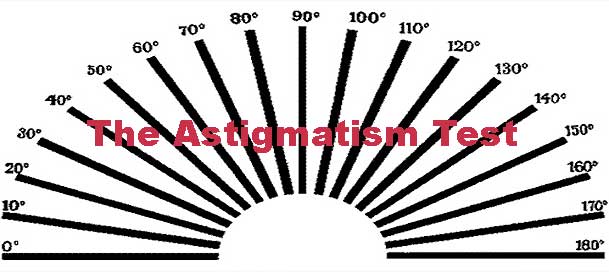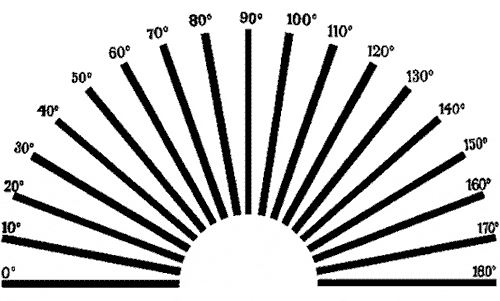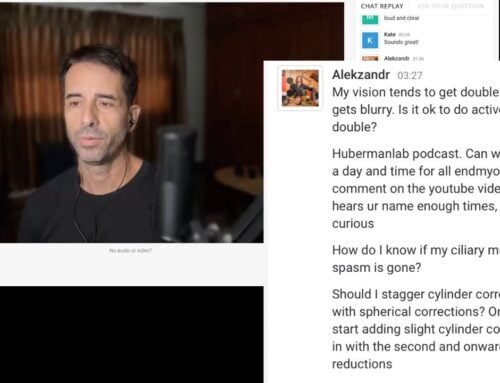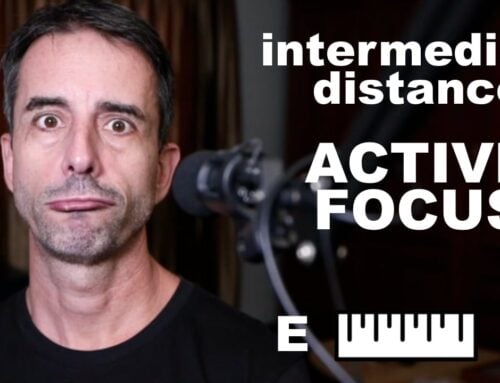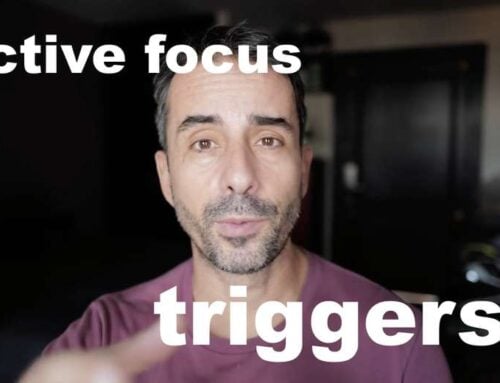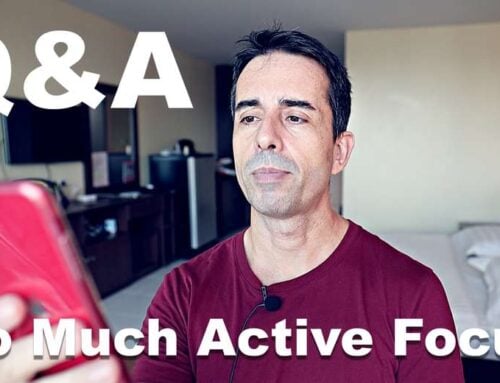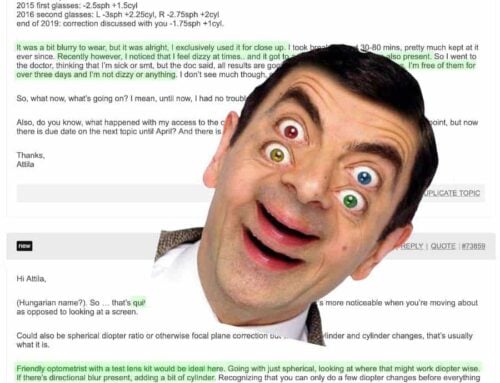The question about astigmatism correction comes up a lot, and there is no definite answer that covers all cases.
In this post we’ll look at a simple DIY at-home test for astigmatism, and various considerations that may apply to your own prescriptions needs. (Note that you may also very like.ly be able to reduce your astigmatism by addressing the cylinder correction of your glasses or contact lenses – more on that later)
Testing Astigmatism
Without the proper tools to test, it isn’t always easy to determine whether an astigmatism correction is appropriate. Of course though this site is a bit different from a regular optometrist – we use glasses as a crutch, a rehabilitative aid. As such we aren’t looking to correct every last bit of a deficiency symptom. We want to expose the deficiency to a small degree, to give us an opportunity to begin correcting it.
Astigmatism is interesting, since it’s a symptom very often, very much created from the lens prescription itself. Almost nobody starts out with any astigmatism, with their first glasses. As you continue on with increasing prescriptions though, sooner or later astigmatism begins to manifest.
It’s yet another pointer that should be obviously telling us that the glasses are a problematic way to address myopia. You accept this mainstream form of symptom treatment, and things continue to get worse and more complex.
First and something you find me stating a lot:
Astigmatism Correction For Computer Use
If you are new to this site you may have some catching up to do on that subject – for everyone else though, differential prescription, no astigmatism correction (except some marginal cases of very high myopia and high astigmatism).
As for distance use, your normalized prescription may or may need an astigmatism correction.
Generally speaking, you don’t want to simply drop an astigmatism correction entirely, if it is over a full diopter. This does warrant a little bit of exploring of course, either at your optometrist or through a bit of a discussion you might choose to have with me (the former being more accurate, though often the optometrist isn’t amenable to discussing reduced prescriptions).
Careful with changing cylinder correction, since not enough means you’ll end up with astigmatic blur
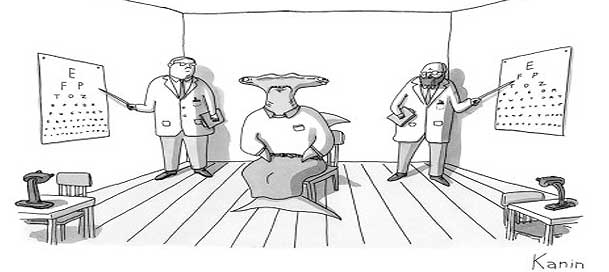
Astigmatic blur = directional blur.
In many cases, your first normalized prescription should only be reducing in spherical values (the straight on myopia), leaving the axis and cylinder portions of the correction as it is. Why?
Your eyes themselves, as well as the visual cortex in your brain expect a specific signal and environment. The more more you change about it at any one time, the more stress you introduce into the system. While you will still improve, this isn’t helping in any way. So rather than to make changes to your prescription on multiple planes, you start out by just reducing the spherical (as discussed elsewhere here on the blog, and in the course).
Once you have improved your vision to the point that the first normalized should be lowered again, it’s worth taking a look at adjusting the astigmatism correction. Some clients, and some cases are best served by making an alternate adjustment, where one reduction is only astigmatism, and the next only spherical – though that’s something that we want to look at on a case by case basis.
Measure Your Astigmatism
If you just have average myopia, it is simple to determine your astigmatism correction needs:
If you have less than one diopter of astigmatism correction, you might not need it altogether.
In cases where the myopia is also quite low, I often recommend to eliminate the astigmatism correction. There is a simple small test to expose significant astigmatism correction needs, though it’s not exactly a perfect way to establish whether the correction is necessary. Lets take a look:
Basic astigmatism chart.
Take a look at the above image. Move back from your screen, until you get some blur on the lines. Now move closer again, until the lines are just barely clear. Now, assess:
Do all the lines look the same? Any more bold than others?
If all lines look the same or nearly the same, then you may not need an astigmatism correction. The lines address the “axis” part of your current astigmatism correct. The degree is where you would get additional correction, and the cylinder expresses how much correction is added. There is a bit more to it, though for our purposes here this is all we really need.
DIY At Home Astigmatism Test
Update: If you want to fully test your astigmatism at home, you can print a simple testing tool and check your astigmatism yourself.
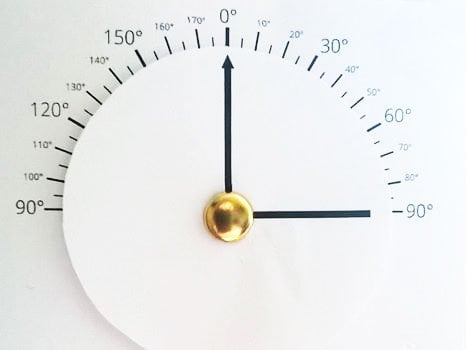
A simple printed astigmatism test.
The full instruction including the printable file and how-to guide can be found on this astigmatism measuring page.
Using Optometry Tools
You should be able to ask your optometrist, during your prescription exam, to show you the correction with and without astigmatism correction. During the part of the exam when you look at the eye chart, and are presented various diopter options, this would be appropriate.
If your optometrist refuses to give you this options, find a new one. Vote with your wallet, you should expect to be able to understand the assessment of your own eyesight!
Avoid confrontation or ill will, just take note and don’t come back. Arguing serves no benefit, and beliefs are deeply ingrained. Ideally you might ask around optic shops whether they are amenable to letting you try corrections with and without astigmatism correction.
If your astigmatism correction is below one diopter, often times you may find you don’t need it to see the eye chart clearly. You may need about 0.25 diopters of spherical correction to replace every 0.50 diopters of astigmatism (cylinder) correction, to get comparable results in clarity of sight.
We care about this, since we want to simplify your diopter correction. The less complexity, the easier it is to continue to improve, as well as seeing without glasses (when you are already in low myopia territory).
Reducing Your Astigmatism
If you astigmatism started as a low cylinder value, or possibly you didn’t even have any astigmatism during your initial myopia progression, it’s very possible that you can reduce and even eliminate your astigmatism.
We discuss this approach at length in some of our how-to guides and videos.
Despite my face.
Above video on low myopia and high astigmatism can be found here. And then there is a whole extensive library of astigmatism discussion, cylinder reduction guides and everything you need to address your own astigmatism, in our astigmatism section of this site.
Cheers,
Jake

